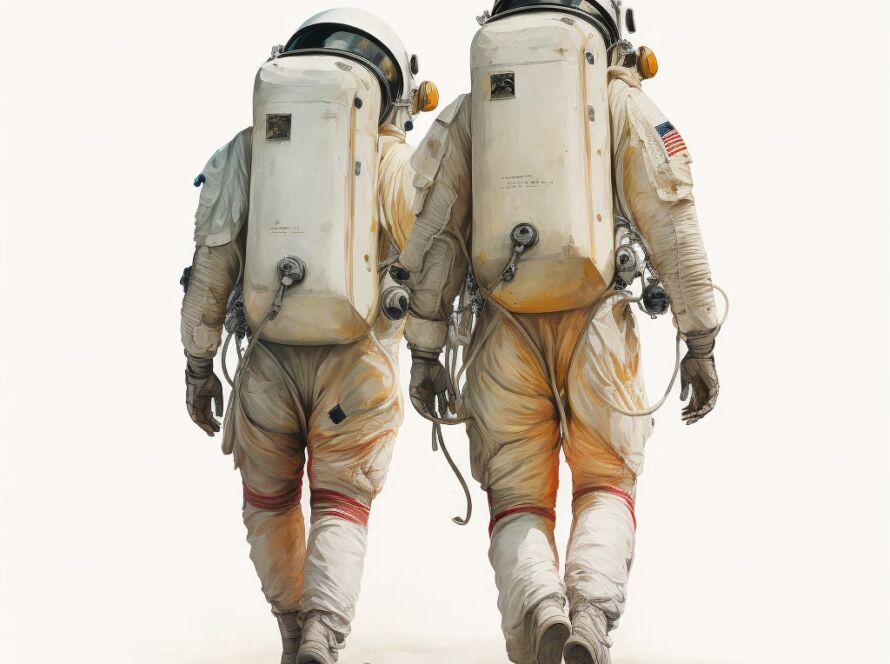The sheer scale of the universe is difficult to comprehend, but AI has been instrumental in helping astrophysicists explore its vastness:
- Mapping the cosmos: AI is used to analyze astronomical data from telescopes, allowing researchers to create more accurate 3D models of the universe.
- Cosmic expansion: AI helps scientists measure the rate of the universe’s expansion (Hubble constant) by analyzing supernova data and other celestial phenomena. This provides clues to the size and fate of the universe.
- Galaxy classification: Machine learning algorithms, such as those in projects like Galaxy Zoo, are helping classify galaxies, further improving our understanding of how big the universe truly is.
Although AI hasn’t provided a definitive answer to the universe’s size, it is allowing astronomers to more accurately predict and understand its scale by analyzing astronomical phenomena at speeds no human could achieve alone.

The vastness of the universe has long been one of the most intriguing mysteries in astronomy. For centuries, scientists have sought to understand the true scale of the cosmos and its boundaries, if any exist. While technological advancements in telescopes and observational techniques have brought us closer to answering the question of how big the universe really is, recent progress in artificial intelligence (AI) is providing new insights into this age-old mystery. By analyzing massive datasets, simulating cosmic evolution, and refining our models of space-time, AI is helping astronomers unfold the mystery of the universe’s size.
How AI is Helping to Measure the Universe
- Analyzing Astronomical Data
The observable universe stretches for about 93 billion light-years in diameter, encompassing billions of galaxies, each with billions of stars. The amount of data collected from telescopes, satellites, and space probes is staggering. AI algorithms, particularly those using machine learning, have become essential for processing this immense volume of information. By sifting through data from sources like the Hubble Space Telescope and the Sloan Digital Sky Survey, AI can identify patterns, detect faint objects, and measure distances with greater accuracy than traditional methods.
For example, AI techniques such as neural networks can analyze the light emitted by distant galaxies to determine their redshift—a measure of how much the light has been stretched as the universe expands. Redshift measurements are crucial for estimating the distance of celestial objects, which helps in mapping the scale of the universe.
- Refining the Hubble Constant
The Hubble constant is a key value that describes the rate of expansion of the universe. Determining its precise value is essential for estimating the size and age of the universe. However, there has been a discrepancy between the Hubble constant calculated using the cosmic microwave background (CMB) data from the early universe and the value obtained from measurements of nearby galaxies.
AI is playing a pivotal role in resolving this tension. Machine learning algorithms can analyze various datasets to refine the calculations of the Hubble constant, incorporating data from different sources such as gravitational wave observations, supernovae, and the CMB. By providing a more accurate estimate of the universe’s expansion rate, AI helps to better determine how large the universe really is.
- Simulating the Universe’s Evolution
Understanding the size of the universe also involves studying its evolution from the Big Bang to the present day. AI-driven simulations can model the behavior of matter and energy over billions of years, allowing researchers to track the formation of galaxies, dark matter distribution, and cosmic structures.
These simulations use AI to replicate various cosmological scenarios, adjusting parameters to match observed data. By refining these models, scientists can make more accurate predictions about the size of the universe, as well as gain insights into whether it is finite or infinite.
- Exploring the Role of Dark Energy
Dark energy, which accounts for roughly 68% of the universe’s total energy, is thought to be responsible for its accelerated expansion. Despite its significance, little is known about its nature. AI helps analyze astronomical data to study the effects of dark energy on the expansion rate and structure of the universe. By understanding how dark energy influences cosmic growth, researchers can better estimate the ultimate size and fate of the universe.
AI is revolutionizing the field of cosmology by providing powerful tools to analyze data, refine measurements, and simulate cosmic evolution. While the true size of the universe remains a profound mystery, AI is helping to piece together the puzzle, providing new insights into the nature of space, time, and the cosmos. As AI continues to advance, it brings us closer to understanding just how vast our universe truly is.



